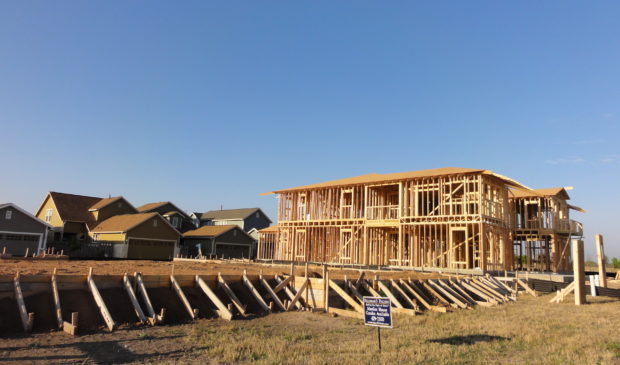Council confronts thorny issue: How much more housing does Austin need?
Wednesday, June 13, 2018 by
Jack Craver City Council members engaged in yet another rambling, inconclusive debate over CodeNEXT Tuesday morning, this time over the amount of new housing that the new code should allow to be built.
Currently, Council members are not in the process of actually crafting the code, but rather discussing and debating what they want CodeNEXT to achieve.
The debate ended in little more than a majority of Council members supporting a statement that CodeNEXT should allow the city to create the new housing called for in the city’s Strategic Housing Blueprint, which Council adopted last year. The blueprint calls for 135,000 new housing units to be built over the next 10 years and for 60,000 of them to be affordable to lower-income residents.
Nearly all Council members also agreed with the idea that 135,000 units likely won’t be created unless the code’s capacity for new housing is greater than that figure. Housing “capacity” refers to the maximum number of units that would be allowed to be built according to the rules. For instance, a vacant lot may have the capacity to have up to 100 units built on it, but there might not be a builder interested in providing them.
Council Member Greg Casar wanted to push for an even more ambitious capacity goal, suggesting that the capacity should be twice as great as the number of units that Council hopes to create.
Council members Leslie Pool and Alison Alter objected to the language, which they described as too specific and potentially unrealistic. Both also said that they didn’t see the point of debating housing goals, given that Council had already established goals through the housing blueprint.
Pool was unconvinced by the notion that the capacity had to exceed the desired housing production. “I don’t know that it must be greater,” she said.
Pool also said that the forces responsible for new housing were largely out of Council’s control.
Council Member Delia Garza agreed with Pool on that point but said that at the very least Council had to create the “framework” in which new housing is allowed to be created.
“I don’t understand the hesitancy for that to be the broad goal,” she said.
Council Member Pio Renteria similarly said that he supported establishing ambitious goals with the knowledge that they likely won’t be achieved.
Mayor Pro Tem Kathie Tovo said that while the language appeared inoffensive in the abstract, she noted concerns “in the community” about the potential implications of ambitious housing goals.
“It’s about the questions down the road,” said Tovo.
Similarly, Pool said that insisting on a major increase in housing capacity “provides an open door to additional entitlements” for developers.
Garza later responded that she had “no qualms” about significantly increasing housing capacity, noting the high rates of evictions in her district and what she described as a desperate need for additional housing.
“I don’t care what we have to do down the road,” said Garza. “If it means that I’m going to live next to a fourplex or a sixplex or a tenplex, I’m OK with that … so we can keep our minority and working families in Austin.”
Mayor Steve Adler, who was playing referee throughout the discussion, asked Council members to signal their comfort with Casar’s language that suggested capacity be twice the housing production goal by holding up a number of fingers. A majority put up four or five fingers (indicating strong support) for that language, while Pool, Tovo, Alter and Council Member Ora Houston indicated opposition by holding up fewer fingers.
Houston suggested the goal not propose a specific capacity – only that it say that the capacity should exceed the desired housing production. Alter and Pool both signaled opposition to that as well, and Casar, Garza and Council Member Jimmy Flannigan indicated that they didn’t want to support what they viewed as a watered-down goal.
“I just want some recognition that based on other cities, we’re hearing two times greater and even three times greater” capacity is necessary, Casar said.
There was more consensus on setting a goal for the creation of 60,000 affordable units over the next decade. Only Pool strongly objected, holding up just her index finger.
Council is spending another full day discussing CodeNEXT today. While Adler wants to continue the informal discussion about setting goals for the code, a number of others on Council have made it clear they believe they might as well move on to proposing and voting on specific changes to the code.
Curious about how we got here? Check out the Austin Monitor’s CodeNEXT Timeline.
Photo by Garreth Wilcock made available through a Creative Commons license.
The Austin Monitor’s work is made possible by donations from the community. Though our reporting covers donors from time to time, we are careful to keep business and editorial efforts separate while maintaining transparency. A complete list of donors is available here, and our code of ethics is explained here.
You're a community leader
And we’re honored you look to us for serious, in-depth news. You know a strong community needs local and dedicated watchdog reporting. We’re here for you and that won’t change. Now will you take the powerful next step and support our nonprofit news organization?



